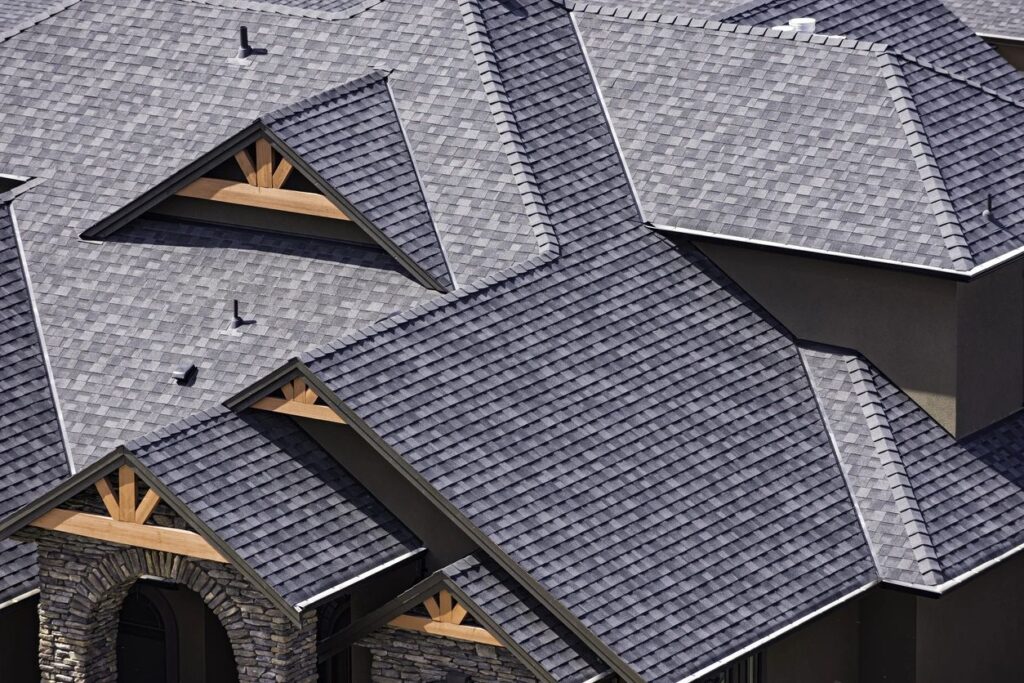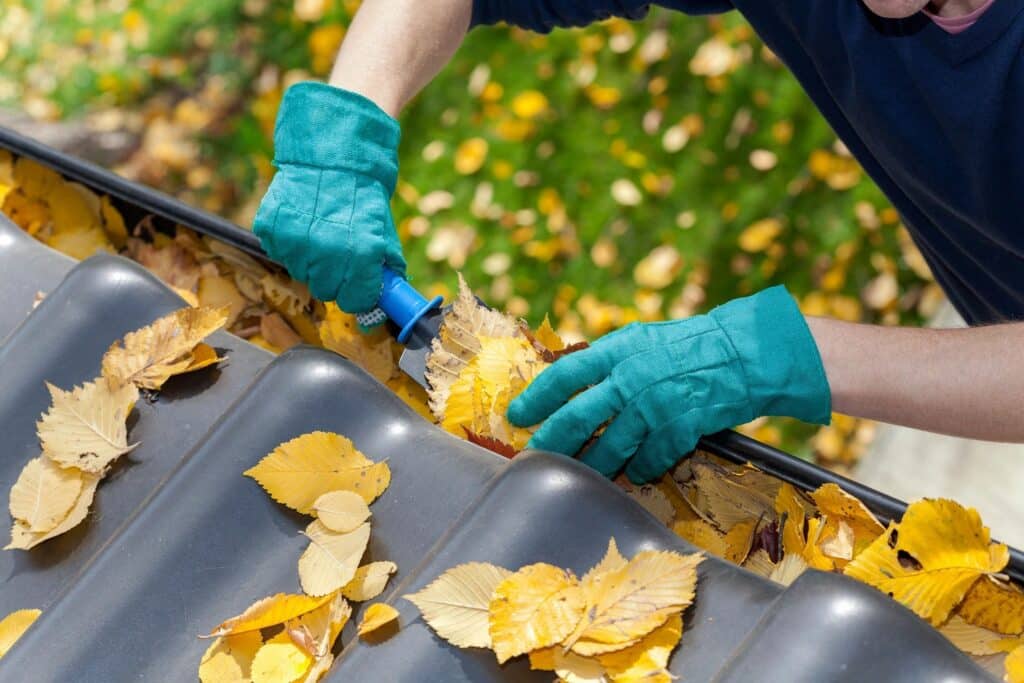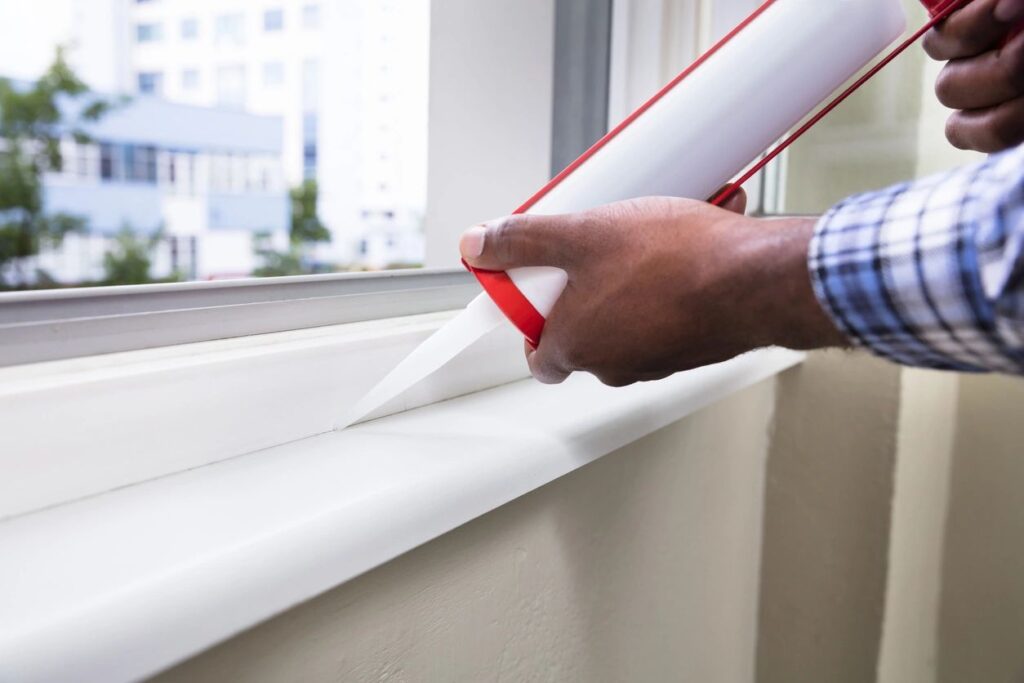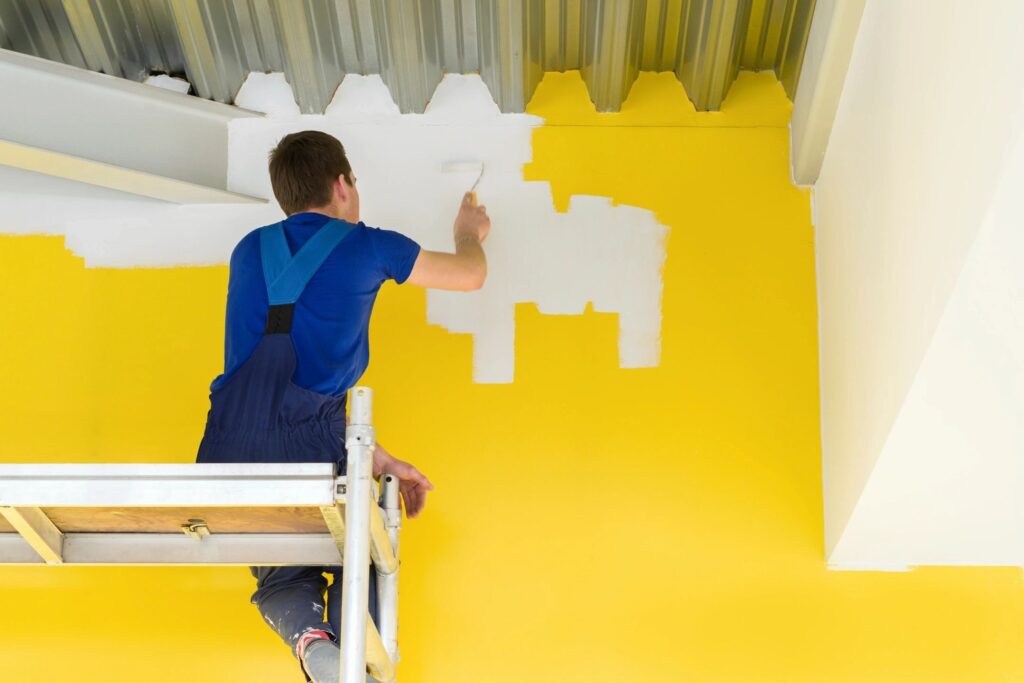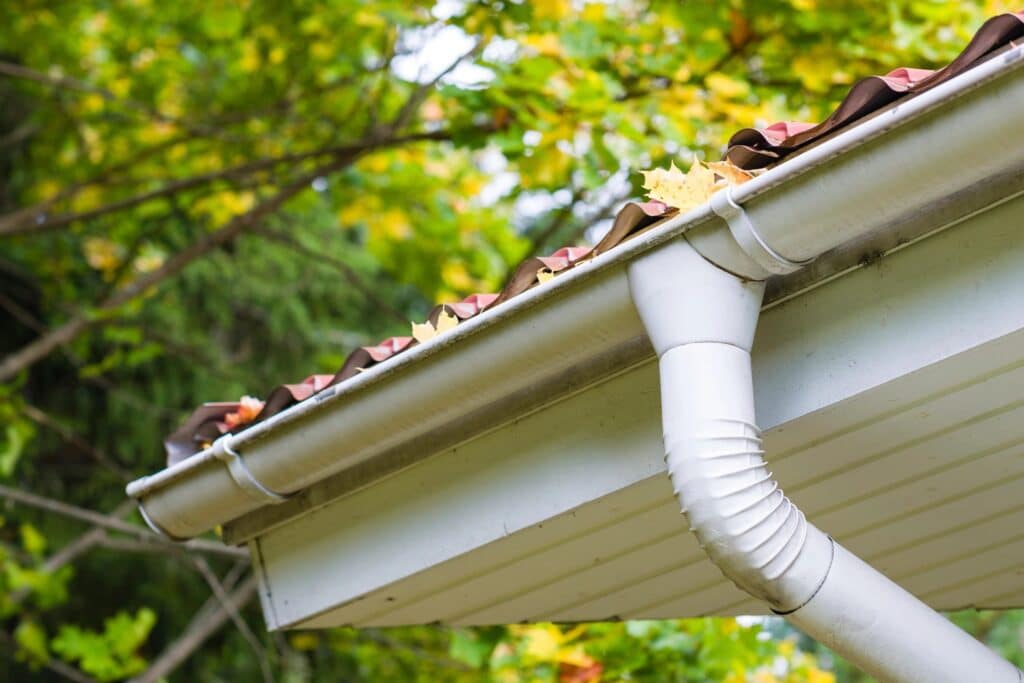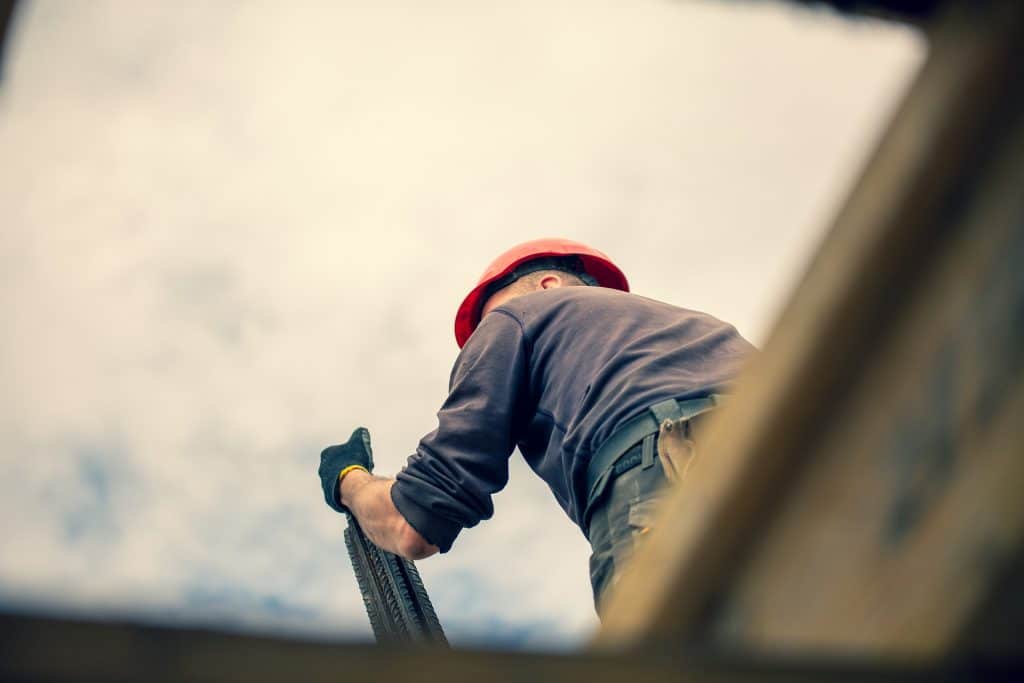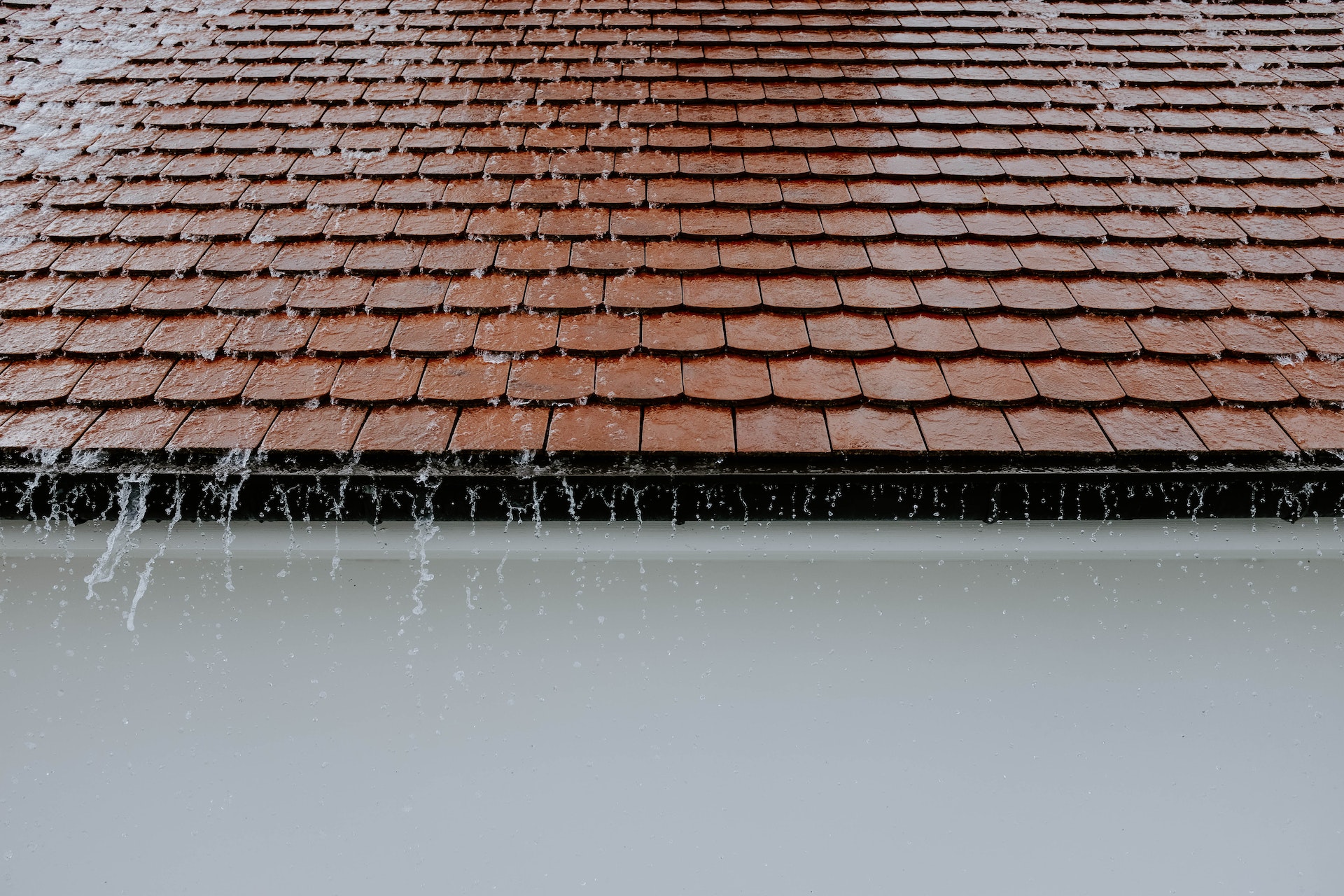Begin by checking and cleaning your gutters. Clear out leaves, and debris, and make sure there are no clogs to stop water damage.
Look over your house’s outside paint and wood. Quickly fix any chips in the paint or rotting wood to prevent more damage.
Add pest control for the season by sealing openings and keeping bushes cut back from your home.
Also, inspect your roof for any missing shingles and ensure the attic is well-ventilated to prevent ice dams in winter.
Taking these steps helps keep your home safe from the weather all year. Focus on these tasks to make your work count.
Inspecting and Cleaning Gutters
Start by checking your gutters for leaves, debris, and clogs to keep your home safe from water damage. It’s important to do this regularly, especially before it starts to rain a lot. While checking, also look for any sagging or damage as these can stop the gutters from draining well.
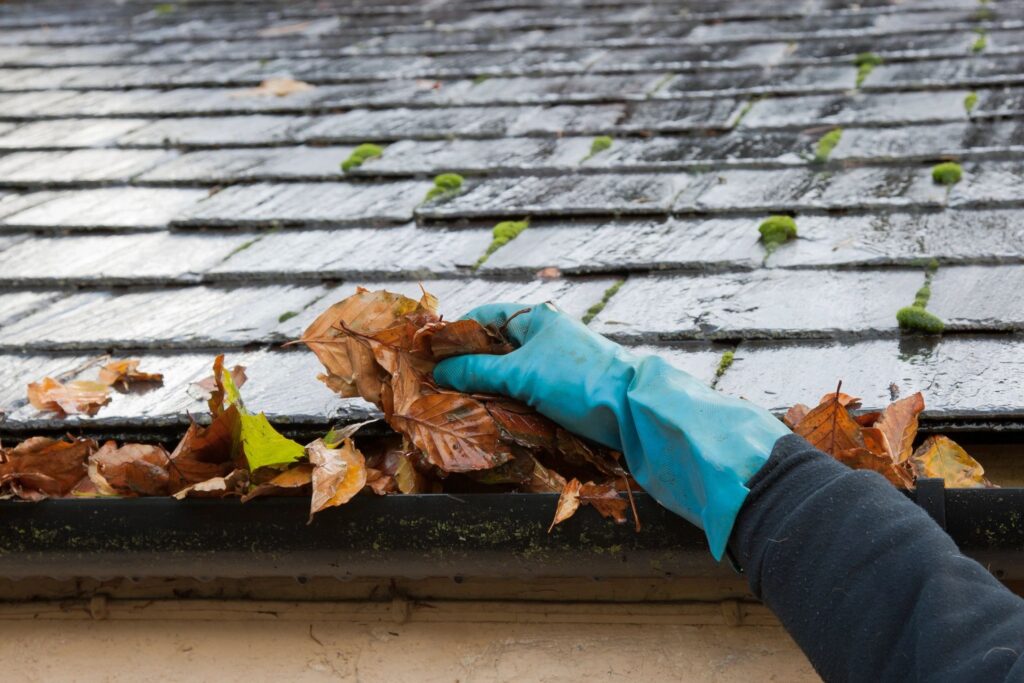
Next, clean the gutters. You’ll need a strong ladder, gloves, and safety gear. Begin by taking out the big debris with your hands. Then, use a garden hose to wash away the small stuff. This helps stop water from overflowing during storms, which could damage your foundation or get into your basement.
To keep your gutters clear longer and make cleaning easier, think about getting gutter guards. They help keep stuff out and let water flow smoothly. Remember, clogged gutters can cause water to overflow and lead to mould on your house, which can be expensive to fix.
Taking care of your gutters helps protect your home and avoid costly repairs.
Managing Exterior Paint and Wood
To keep your home’s exterior in good shape, fix any chipped or peeling paint on wood siding right away. This protects the wood from moisture, which can cause rot and decay.
Check the wood regularly for signs like discoloration or swelling. These can mean wood rot is starting. If you see these signs, poke the area with a screwdriver. If the wood is soft and easy to push into, it has decay and needs quick fixing.
To deal with wood rot, take out the damaged wood and use a wood hardener to make it strong again. Then repaint it to keep it looking good and to protect it from more damage.
Seasonal Pest Control Measures
Seal gaps and cracks on your home’s outside this fall and winter to stop pests from coming in. Check all places where pests could enter, like where utility pipes are. Use caulk or foam for small gaps and mesh or steel wool for big ones.
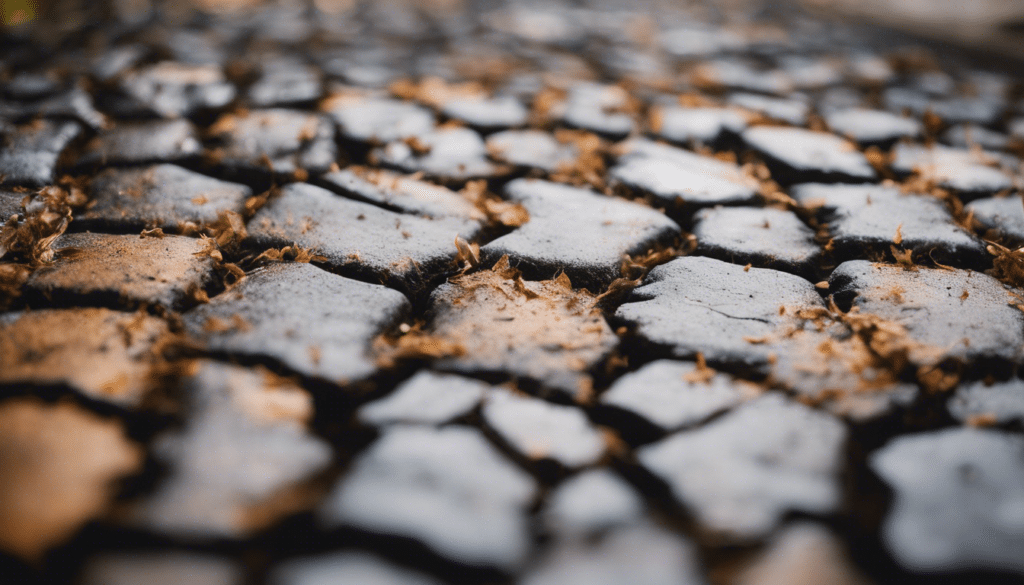
Trim trees and bushes that touch or hang over your house. This stops pests, like rodents, from getting onto your roof and inside your home. Keep branches a few feet away from your house.
Clean your gutters and downspouts often. Blocked gutters can collect water and attract pests like mosquitoes. Make sure water flows away from your home to keep it dry and pest-free.
Think about hiring a pest control professional for a detailed check and to create a plan to keep pests out all year. They can use special methods and products to protect your home.
Roof Condition and Safety Checks
After dealing with pests, check your roof and gutters next. Look for missing shingles or leaks to prevent water damage. Water stains on your ceilings or walls are signs of trouble. Fix these problems early to avoid expensive repairs later.
Also, cut back tree branches hanging over your roof. This stops branches from hitting your roof in storms and keeps leaves from blocking your gutters.

Image by Freepik
Make sure your attic is well-ventilated too. This stops ice dams in the winter and keeps your roof cooler, making it last longer.
If you see big problems or you’re not sure what to do, call a professional roofer. They can check your roof thoroughly and fix complicated issues safely. This keeps your roof strong and your home dry all year.
Landscaping and Tree Maintenance
Taking care of your landscape, including cutting back shrubs and trees, keeps your property looking good and safe in storms. It’s important to keep up with tree care for the health of the trees and your home’s safety.
Follow these three main steps:
- Trim Shrubs and Trees: Cut off dead branches and thin crowded areas to let in more air and light. This helps the trees stay healthy and reduces the chance of branches breaking in bad weather.
- Add Mulch to Flower Beds: Put a layer of mulch around your plants and trees to keep the soil moist, stop weeds, and make your yard look neat. Don’t let the mulch touch the tree trunks to avoid rot.
- Use Native Plants: Using plants from your area looks nice, helps local wildlife, and is better for the environment. These plants don’t need as much water or care, which makes gardening easier.
Driveway and Pathway Upkeep
Pressure-wash your driveway and pathways every year to remove dirt and stains, making them look better. This also helps them last longer. When pressure washing, use steady pressure to avoid streaks or damage.
Check these areas often for cracks or potholes. Fix these problems quickly to avoid worse damage. For concrete, try staining or sealing to make it look new and protect it from weather and wear.
Keep your outdoor areas clean and free from leaves and debris that can stain. A clean and well-kept driveway and pathways make your home look great and keep it safe.
Window and Door Inspections
Keep your driveway and pathways clean, and also check your windows and doors for damage. Doing this can save you money and keep your home warm.
Here’s what to do:
- Check for Drafts and Leaks: Look for drafts around your windows and doors. Small leaks can cause big problems. You can use a candle or incense stick to find these leaks.
- Look at Weather-Stripping, Caulking, and Seals: These can wear out over time and let cold air in. Check them for any cracks or gaps and replace them if they’re old or damaged.
- Check How They Work and Look for Damage: Make sure all locks and hinges work well. Look for any rot, decay, or termite damage on wooden parts. Fix these problems quickly to avoid bigger issues later.
Checking these things can make your home more comfortable and lower your energy bills.
Frequently Asked Questions
How Can I Reduce Energy Costs With Exterior Home Improvements?
To cut energy bills, upgrade your windows, boost insulation, and add roof coatings. Put seals on doors and block drafts. Update your siding and use shiny surfaces. Also, install smart thermostats and get energy checks to save more money.
Are Solar Panels Affected by Seasonal Changes?
Yes, seasonal changes do affect solar panels. Their performance can change with the weather, such as getting too hot or being covered by leaves or snow. It helps to check them in spring and clean them in summer to keep them working well.
What Exterior Lighting Options Are Best for Security?
For top safety, use LED floodlights with motion sensors and smart bulbs. Add lights around your home’s edge that turn on from dusk until dawn. Also, set up landscape lights, wireless systems, and security cameras to keep your home safe.
How Do Weather Conditions Affect Home Insurance Rates?
Weather can really change your home insurance costs. Things like floods, hail, and fires can make premiums go up. Insurance companies look at the weather and how windy it is, then change prices depending on where you live and how ready you are for disasters.
What Are Eco-Friendly Alternatives for Outdoor Cleaning Products?
For green outdoor cleaning, use vinegar, baking soda, and citrus cleaners. Choose plant-based sprays and olive soap. Try pressure washing or steam cleaning with reusable cloths and collected rainwater. These methods help keep the environment clean and safe.
Conclusion
You’ve taken great steps in handling the essential outdoor maintenance to keep your home protected against weather conditions. Make sure to clean your gutters regularly, take care of your paint, and keep pests away.
Check your roof often and keep your yard looking neat to avoid any future problems. Don’t forget to check the condition of your driveway, walkways, and the sturdiness of your windows and doors.
Being proactive in these areas not only keeps your home looking beautiful but also safe and valuable. Keep up the good work and enjoy the benefits all year long.
For expert help, contact MIDWEST Construction and Remodeling. We’re here to assist with all your home maintenance needs.

